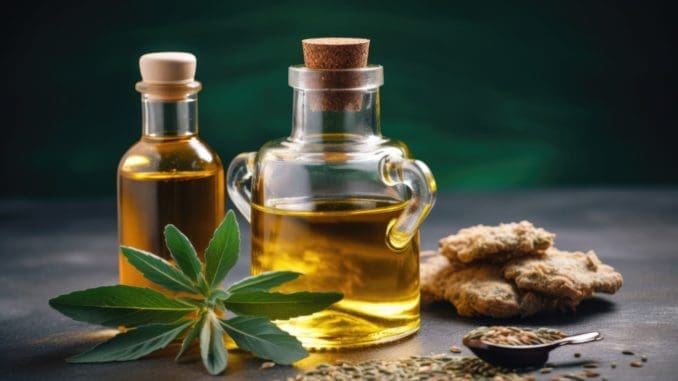
Cannabidiol, or more popularly known as CBD, is a natural compound derived from the cannabis plant. It has gained popularity in recent years due to its purported health benefits. While its therapeutic claims are still under investigation, many users swear by its calming properties, which may support stress relief, improve sleep, and potentially provide other wellness perks. Unlike THC, the psychoactive compound found in marijuana, CBD doesn’t induce a high, making it a safe and intriguing ingredient for everyday meals.
Cooking with CBD oil has become quite a prevalent trend among food enthusiasts and health-conscious consumers. As CBD continues gaining mainstream acceptance for its potential wellness benefits, creative culinary artists continually seek innovative ways to incorporate it into their kitchen endeavors.
Whether you’re a seasoned chef seeking a new edge in your dishes or a novice home cook interested in CBD-infused cuisine, this guide aims to equip you with the knowledge to experiment confidently and safely. 
Choose Quality CBD Oil
Understanding the diverse pricing structure of CBD oil can significantly influence your cooking outcomes. There are premium options that boast superior potency and advanced manufacturing processes, typically reflecting a higher price tag. Conversely, more affordable choices may offer less impressive quality. Like in any culinary adventure, the overall flavor and gastronomic experience tend to elevate when premium ingredients are utilized—the same principle applies when choosing CBD oil.
Don’t hesitate to seek recommendations from trusted friends or family members with specific brand experience. Their tried-and-tested advice can guide you toward quality Chariswell CBD oil products and those from other trustworthy brands.
Additionally, use the resources available online to further your understanding. A quick Internet search can yield abundant information regarding the best and mediocre CBD oil brands. Utilize those insights to discern the right product that aligns with your cooking goals and budgetary considerations.
Use Fat With CBD
Cannabinoids blend well with fat, so CBD has to be infused into fat or oil-based ingredients for the best results. Doing so increases the bioavailability of CBD. And, like a domino effect, you and anyone who tastes the dish are promised the full benefits of the compound.
Common examples to use for cooking are butter, coconut oil, or ghee. These high-fat ingredients act as excellent carriers for CBD and contribute their distinct flavors to culinary creations. Butter, with its creamy texture and mild flavor; coconut oil, with its tropical notes; or ghee, offering a nutty aroma, can each impart unique tastes and flavors to your CBD-infused dishes, thereby elevating the overall gastronomic experience.
Always Start With Small Quantities First
When embarking on your culinary journey with CBD oil, remember that its potency can be likened to spices. Begin with modest quantities, as you can always add later if necessary.
If you’re a first-time user, a conservative dose of five to 10 milligrams per serving is a recommended starting point. Subsequently, pay attention to how your body responds. This initial experience will offer valuable insight into whether you should adjust the dosage in future cooking endeavors, potentially in five-milligram increments, or decrease the quantity used.
Taking a measured approach boosts the physical effects of CBD and contributes to a more balanced flavor profile in your dishes. CBD oil should blend harmoniously within your recipe, offering subtlety rather than dominating the overall taste. The aim is to achieve a discreet CBD presence that doesn’t overpower the other flavors in your meal, beverage, or baked treats.
Avoid Overheating CBD Oil
One essential guideline when cooking with CBD oil is never to place it under direct heat. Committing this mistake removes critical cannabinoids and terpenes that bring in CBD’s therapeutic and synergistic effect.
A significant threshold to be mindful of when cooking or baking with CBD oil lies between 320 and 356 degrees Fahrenheit. The compound begins to degrade at these temperatures, and its beneficial cannabinoids can be compromised.
Incorporate CBD oil on the stovetop into your dish after removing the pot or pan from the heat source. Allow the dish to cool slightly, for approximately a minute, before gently stirring in the CBD oil as the finishing touch. This method ensures that the heat is low enough to preserve the compound’s beneficial properties.
Maintaining the correct temperature in baking becomes easier when you pre-heat the oven. Be mindful to keep the oven temperature at or below 350 degrees Fahrenheit to protect the integrity of the CBD oil and maximize its potential benefits in your baked creations.
Final Thoughts on Cooking with CBD Oil
Whether a professional chef or a home cook, incorporating CBD oil into your culinary repertoire can open doors to a new gastronomic experience. But remember that CBD oil’s quality can significantly impact your results. Always choose reputable brands and be mindful of the dosage to ensure a safe and delicious outcome.
Finally, don’t be afraid to make mistakes and learn from them. Much like any culinary journey, mastering the art of cooking with CBD oil will take time, practice, and a bit of trial and error. Embrace this process as part of the adventure. Remember, the ultimate aim is to enjoy the journey while discovering new, healthy, and exciting ways to enhance your meals.


Be the first to comment